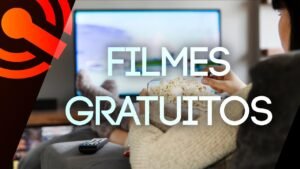High-Efficiency Energy Solutions for Tech Devices: Innovations and Future Outlook
As the demand for technology continues to rise, so does the need for High-Efficiency Energy Solutions for Tech Devices. From smartphones to laptops and wearables to IoT devices, the ever-growing reliance on tech devices makes energy efficiency a critical area of innovation. High-efficiency energy solutions are not only environmentally beneficial but also pivotal for enhancing device performance and user satisfaction.
The Importance of Energy Efficiency in Tech Devices
Energy efficiency in tech devices addresses multiple challenges, including environmental sustainability, device longevity, and cost-effectiveness. The production and disposal of electronic devices contribute significantly to carbon emissions and e-waste. By improving energy efficiency, manufacturers can reduce these impacts, creating a positive ripple effect across industries.
Additionally, energy-efficient devices have longer battery lives, which is crucial for users who rely on portable gadgets for work and leisure. Lower energy consumption also translates to reduced operational costs for users and businesses alike.
Innovations Driving High-Efficiency Energy Solutions
- Advanced Battery Technologies
- Lithium-sulfur and solid-state batteries are emerging as game-changers, offering higher energy densities and improved safety over traditional lithium-ion batteries. These innovations promise longer-lasting power for devices and reduced energy wastage.
- Energy Harvesting
- Technologies such as solar panels, thermoelectric generators, and kinetic energy harvesters are being integrated into devices to supplement power needs. For instance, smartwatches that charge through solar cells or fitness trackers powered by body heat showcase the potential of these advancements.
- Optimized Power Management
- Power management integrated circuits (PMICs) are being designed to optimize energy use in devices. By dynamically adjusting power allocation based on usage patterns, these systems reduce waste and enhance efficiency.
- Low-Power Processors
- The development of processors with ultra-low power consumption, such as ARM Cortex-M and Apple’s M-series chips, is revolutionizing device efficiency. These processors deliver high performance while minimizing energy use.
- Efficient Displays
- Display technologies like OLED and microLED consume less energy compared to traditional LCDs. Furthermore, advancements in adaptive brightness and dark mode settings help conserve energy.
Role of Software in Energy Efficiency
Software plays an equally vital role in enhancing energy efficiency. Efficient coding practices, optimized algorithms, and energy-aware applications can significantly reduce power consumption. Operating systems like Android and iOS continuously improve their energy management features, such as app hibernation and intelligent background task management.
Challenges and Future Directions
Despite the progress, several challenges remain in achieving universal high-efficiency energy solutions:
- Material Constraints: The availability and cost of advanced materials for next-generation batteries and components can limit widespread adoption.
- Scalability: While energy harvesting technologies are promising, scaling them for mass production and integration into small devices remains challenging.
- User Education: Many users are unaware of how to maximize the energy efficiency of their devices, highlighting the need for better education and user-friendly energy management tools.
Looking ahead, collaboration between hardware manufacturers, software developers, and policymakers will be crucial. Research into renewable materials, AI-driven energy management, and cross-industry standardization can further push the boundaries of energy efficiency.
High-efficiency energy solutions are integral to the future of tech devices. By embracing advanced technologies and innovative practices, the tech industry can not only reduce its environmental footprint but also deliver better value to consumers. As these solutions evolve, they will pave the way for a more sustainable and efficient technological landscape.
FAQs on High-Efficiency Energy Solutions for Tech Devices
- What are high-efficiency energy solutions? High-efficiency energy solutions refer to technologies and practices that minimize energy consumption while maintaining or enhancing the performance of tech devices.
- Why is energy efficiency important for tech devices? Energy efficiency reduces operational costs, decreases environmental impact, and supports sustainability goals by lowering power consumption and carbon emissions.
- What role do solid-state batteries play in energy efficiency? Solid-state batteries provide higher energy density, faster charging, and longer lifespans compared to traditional lithium-ion batteries, making them a critical innovation for portable tech devices.
- How can consumers contribute to energy efficiency in tech? Consumers can adopt energy-saving practices, such as using power-saving modes, unplugging devices when not in use, and purchasing energy-efficient products certified by standards like Energy Star.
- What is the future outlook for energy-efficient technologies? The future of energy-efficient technologies is promising, with advancements in AI-driven power management, renewable energy integration, and sustainable manufacturing practices driving the next wave of innovation.













Post Comment